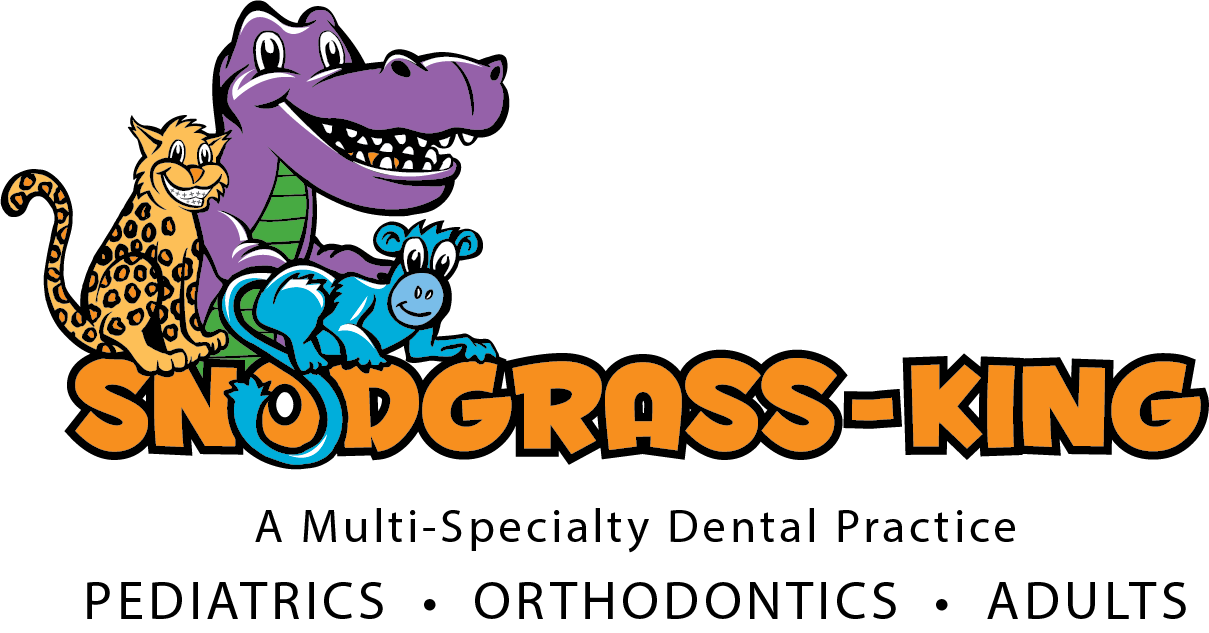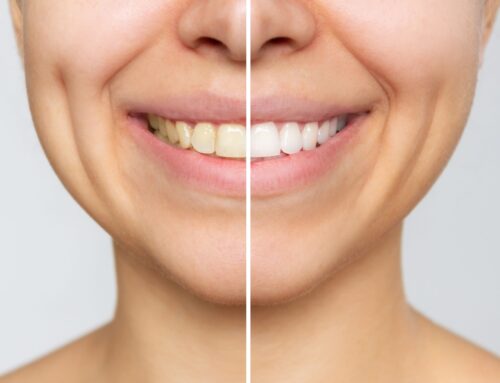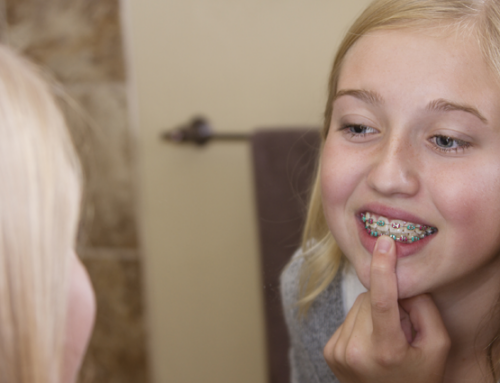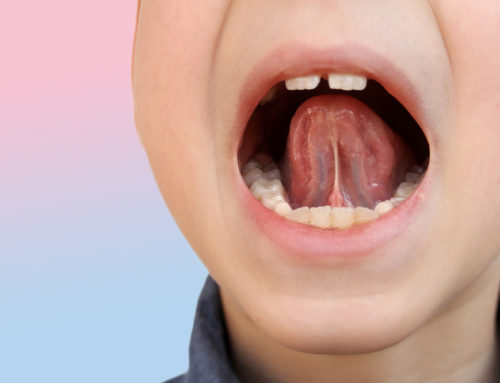Cavities Are Not Just for Kids | Reasons Adults Get Cavities
When you think about cavities, you may think about sugary treats, sodas, and cereals. Foods that most likely caused that cavity you had when you were younger. But one day down the road, while at a routine dental check-up, your dentist tells you that you have two new cavities.
Surprise! Cavities are not just kids’ stories meant to scare them away from indulging in too much sugar. A cavity can occur at almost any age.
According to the CDC, about 1 in 5 of adults over the age of 20 have at least one cavity. . Many of these occur well after childhood into adulthood, and some go untreated and unnoticed.
What Is A Cavity?
Let’s start with some basics. A cavity is generally a small hole on your tooth that has formed as a result of tooth decay. You may have heard this before, but bacteria, plaque, and sugars all have a large part to play in the development of tooth decay. Although this hole starts out small, it can burrow down deeper if left untreated. These holes in the teeth can also be referred to as “dental caries.”
Everyone has some bacteria in their mouths on a daily basis. As we eat sugars and carbs, these sugars stick to our teeth. The bacteria then consume the sugars, producing a harmful acid that can wear down your teeth. As the acid burrows further through your enamel, it leaves behind a small hole. Left untreated, this tooth decay can dig far enough down that it eventually requires a root canal treatment.
Bad oral hygiene habits and sugar consumption are two of the biggest reasons why someone might have a lot of cavities. Remember, the longer you let sugar sit on your teeth, the more time bacteria has to feed on it and produce acid. That’s why you should always brush your teeth in between snacks. Forgetting to floss can have the same effect and cause food particles to hang out in small cracks in between teeth.
Most important of all, however, is getting into those bi-annual dental check-ups. Missing consecutive ones can allow tartar to build up around your teeth, increasing your chances of developing tooth decay.
What Does a Cavity Look Like?
A cavity can range in color from white to black and can vary in size and shape. Most cavities start out as very small spots that almost look like stains. Left untreated, these small spots can grow into significant tooth decay. Keep in mind that not all of the cavity may be visible to the naked eye. Cavities can also burrow down into the dentin and pulp layers. Watch out for this since this type of damage can result in painful toothaches and long visits at the dentist.
Cavity Symptoms
Many small cavities are actually painless and, you may not know you have a cavity at all. That’s why your bi-annual dental cleanings are so important. Your dentist is your first line of defense against possible cavities forming without you even knowing.
If, however, the cavity has enough time to burrow down into the lower layers, it may eventually start hurting. In this case, you may experience sharp pain when eating foods or drinking hot or cold liquids.
Regardless, it’s best to get toothaches checked out as soon as possible.
Cavities in Children’s Teeth
We all start off with baby teeth that eventually fall out, and are replaced with permanent adult teeth, so we understand why many parents assume it’s not a big deal if their child develops a cavity.
But there are many reasons why taking care of your child’s baby teeth is important.
- Decayed baby teeth will either need to be filled or taken out by the dentist. This can be frightening for your child and stressful and costly for you as a parent.
- Missing baby teeth can cause nearby teeth to shift around. This can keep your child’s permanent teeth from coming in correctly, which might mean braces later in life.
- Healthy teeth are required to chew food thoroughly, which nourishes our bodies for overall good health and helps aid in healthy digestion.
- Your child needs their baby teeth to speak clearly.
- Teaching your child the importance of good oral hygiene creates healthy habits that help prevent tooth decay now and in the future.
Yes, baby teeth eventually fall out. Still, they are essential to your child’s immediate and long-term health, development and self-esteem and set the stage for a lifetime of good dental health. Your child’s baby teeth should be cared for and preserved until they’re ready to fall out naturally.
Causes for Cavities in Children’s Teeth
The primary reason cavities affect children more frequently than adults is that their tooth enamel is thinner than an adult tooth, making it easier for bacteria to break through.
Here are a few other common reasons for cavities in children’s teeth:
- Incorrect or Infrequent Brushing: Small children often haven’t developed the fine motor skills or knowledge needed to brush well. Learning how to brush thoroughly and correctly can take many years. Due to this, they may leave some small areas of plaque that can lead to cavities.
- Snacking. Whether it’s at home or at school, kids often love to snack throughout the day. Unfortunately, this can allow for sugars to stick around their teeth for many hours.
- Small Teeth With Lots of Crevices: If you think back to when you were a child, you may remember that you had much smaller teeth. Along with their small size, children’s teeth also have lots of very small crevices that are hard to clean.
- Saliva Transmission: Another person’s saliva can overexpose your child to the acid-producing oral bacteria that cause cavities. This transmission can be from sharing a straw, utensil, or toothbrush.
- Dry Mouth: The primary function of saliva is to help wash away any food debris left in your mouth. When the mouth is dry, this process is disrupted. Saliva also contains elements that neutralize plaque acidity and helps rebuild and restore tooth enamel.
- Poor Oral Hygiene: Similarly to an adult, excess plaque can build up if your child is not brushing and flossing regularly and not having their teeth professionally cleaned every six months.
- Bedtime Drinks: Giving your child sweetened liquids like juice before a nap or bedtime without brushing afterward is a bad idea because salivation slows during sleep because the mouth’s muscles are at rest decreasing the amount of saliva needed to chew or swallow. With a decrease in saliva while sleeping, oral bacteria have a longer time to feed on leftover sugars on and around your child’s teeth.
- Falling Asleep with a Milk Bottle: Babies, or young children, who fall asleep with a milk bottle in their mouth are at the highest risk for tooth decay because baby formula or breast milk both contain natural sugars that can kick-start the process of tooth decay.
In order to help reduce your child’s likelihood of developing cavities, try to teach them good brushing habits. As they are growing, you may still occasionally have to brush their teeth for them, or do it together to show them the correct method.
Aside from this, though, it may also be a good idea to reduce your child’s snacking. Limiting food to larger meals can reduce the amount of time that bacteria have to munch on sugars in your mouth. As for drinks, try to encourage your child to stick with water and other low-sugar options. Remember, even fruit juice has lots of sugar. Just because something is natural doesn’t mean that it can’t have hidden sugars.
How to Prevent Cavities in Kids
The best way to treat childhood cavities is to prevent them from happening in the first place.
Believe it or not, your child’s first dental visit should come shortly after they turn one or when you see their first tooth appear. By taking your child to a dentist at a young age, you’ll be able to detect problems at an early stage before it turns into something more severe.
Here is a quick guide for parents regarding cavity prevention in your child’s teeth:
- Schedule appointments with a pediatric dentist every six months for a professional teeth cleaning, exam and x-rays to detect cavities.
- Make it a habit for your child to brush twice daily for no less than two minutes and floss once daily.
- Teach your child gentle brushing and flossing techniques to prevent gums from bleeding.
- Limit consumption of sugary foods and beverages.
- Ask your dentist about sealants. Sealants are a protective coating that is painted on teeth to seal them, keeping bacteria out.
- Consider fluoride treatments. Most kids get the fluoride they need from tap water and toothpaste. However, your pediatric dentist can also apply a fluoride varnish to your child’s teeth 2-4 times a year.
Treatment for Children’s Cavities
Treating cavities in children is necessary for multiple reasons. Of course, you don’t want your child to be in pain, but many other compilations could arise if you leave tooth decay and a cavity untreated.
For one, it helps to avoid the spread of oral infections, which result in more tooth decay. Second, a cavity in teeth might also negatively affect the formation of permanent teeth. But it doesn’t only affect proper tooth development; it can also contribute to an improper jaw structure.
Furthermore, a cavity can impact a child’s nutrition if left untreated as they chew food with the infected teeth.
How are Child Cavities Treated?
Because of the differences in a child’s tooth compared to an adult, they might have to undergo a slightly different type of dental procedure when they have a cavity. Your pediatric dentist will suggest the best and least invasive cavity treatment for your child, depending on your child’s age and the size of the cavity.
Here are a few of the most common cavity treatments for children:
- Filling: It can sometimes get complicated to treat cavities in children with a filling since the shape of their tooth isn’t always suitable for large fillings. If the cavity is small, the dentist should be able to remove the decay, fill the cavity with a white composite or metal material and preserve the tooth.
- Crown: If a dentist identifies that the cavity is touching both sides of your child’s tooth or that the cavity is very large, they may recommend placing a silver crown on a tooth rather than a filing.
- Extraction: Sometimes, if the tooth is badly damaged or has an infection, the baby tooth may need to be removed. If your dentist removes the tooth, they’ll keep the gap open with a space maintainer, which helps permanent teeth grow in properly.
Signs Your Child Might Have a Cavity
If your child is complaining of a toothache and it has persisted for several days, this is the leading indicator your child might have a cavity. But if your child can’t speak, they can’t tell you where they hurt, which means you need to watch for other signs and symptoms that a cavity is forming.
Even if your child can communicate they are in pain, cavities don’t always cause discomfort, making recognizing your child has a cavity challenging at any age.
Here are other common indications that your little one is suffering from tooth decay and a cavity is emerging:
- Your child complains that their teeth hurt when they bite into something hard or sweet.
- You notice your child seems sensitive to drinking or eating anything that is hot or cold.
- If your child can’t speak, take notice if they are eating less food than usual. This often indicates that it hurts when they chew, or their mouth feels sensitive.
- Your child seems to experience difficulty opening their mouth wide.
- You see visible white or brown spots or stains on the surface of the teeth.
- Holes, cracks, chips or “pits” in the tooth.
Once you identify your child has signs of a cavity, your next step should be to schedule an appointment with a pediatric dentist for an adequate treatment plan.
Risks with Untreated Cavities in Children
Its easy to think that a pediatric cavity is not important because a primary tooth will eventually fall out during the natural shedding process. However, a decayed tooth can have a significant impact on a child’s oral health.
If your child displays signs of a cavity, such as dental discoloration, discomfort, or pits in the tooth material, you should not delay treatment. Here are a few reasons to have a pediatric cavity treated as soon as possible.
- Misaligned Teeth: As a cavity progresses, a large portion of the tooth material may be lost. If too little of the tooth is available for a restorative treatment, the tooth will probably need extraction. Each primary tooth acts as a placeholder for the permanent tooth that will eventually replace it. When the baby tooth is lost before it’s natural shedding, the underlying adult tooth is likely to remain beneath the gums until its natural time of shedding arrives. Thus, a lengthy period may pass before the permanent tooth actually erupts. During this period, the gap left by the missing primary tooth remains unfilled, giving the child’s other teeth enough time and space to shift out of their normal positions. This unwanted dental movement can cause a dental misalignment that will eventually require orthodontic correction. Your child’s straight teeth could become crooked and crowded because of the early tooth loss.
- Spread of Decay: Your child’s teeth start to decay as they are exposed to acids produced by the bacteria in the mouth. The microbes feed on simple sugars from the carbohydrates in your youngster’s food and beverages and release acids as waste products from their digestive process. The decay occurs as the acids demineralize the tooth material. Once decay starts, it can spread to nearby teeth, including your child’s underlying permanent teeth. Thus, the adult teeth can begin to decay before they even erupt.
- Pain and Discomfort: As a cavity deepens, it breaches the dentin layer, which lies just underneath the tooth enamel.The dentin includes sensitive nerve endings that may be increasingly inflamed as they are exposed to temperature and pressure changes because of the hole in the tooth. As your child eats hot or cold food or beverages, they may feel discomfort. Additionally, they may find it painful to simply chew. This inflammation can cause such intense, relentless discomfort that the child is unable to sleep at night. An abscess can also develop on the gums near the decayed tooth. In addition, the child may experience facial swelling and increased body temperature.
- Invasive Treatment: The early treatment of a pediatric cavity can help prevent the decay from spreading. A small cavity is easily treated with a simple filling. However, as the cavity grows, it may require more extensive treatments. With a larger cavity comes a larger filling. The tooth may need to be covered by a dental crown. If the tooth becomes infected, it may require a pulpectomy. If your child is experiencing symptoms of decay, contact Snodgrass-King to schedule an appointment.
Cavities in Adult Teeth
Aging does not allow us to outgrow cavities, though that would make life much easier. Without proper oral hygiene care, adults are just as prone to cavities as children.
The following are a few common causes of dental cavities (caries) in adults.
Causes for Cavities in Adult’s Teeth
- Weakened Fillings: While fillings can last anywhere from 5 to 20 years, it is not uncommon for a filling to eventually crack or fall out. If you notice a sudden hole appear in one of your teeth, don’t hesitate to get a check-up as soon as possible. If the seal on composite fillings or dental sealants cracks or weakens in general, plaque and tartar can accumulate and lead to further or new decay. That’s why it’s important that missing fillings are addressed right away. If your dentist recommends that you replace the filling, you will most likely get a choice of composite, ceramic, glass ionomer, or gold/silver fillings.
In the meantime, try to avoid hard foods or candies or injuries to the tooth as these can weaken or crack fillings. In addition, be sure to stay up to date with scheduled dental cleanings and appointments. Eventually, almost any filling will end up falling out. But, it is important to be mindful of the ways you can extend the life of your filling with proper care. - Diet and Hidden Sugars: Dental decay occurs when bacteria in the mouth consume sugars and produce harmful acids. This generally means that it’s best not to overindulge in sweets. Having said that, we know that life happens, and sometimes it’s easier to grab and go, rather than eating a balanced diet. Next thing you know, all the sugar in the cereal bar that you love is coming back to haunt you in cavity form. The best thing you can do is focus on keeping up good habits. Remember that drinks have hidden sugars as well. As adults, we sometimes tend to sip on sweet lattes and other coffee drinks throughout the day. These can be particularly harmful because the liquid can remain on teeth for an extended period of time before brushing. Taffy, caramels, and other sticky candies are similar in this regard. Last but not least, always remember to check nutrition information and read labels. Sugar might be hidden under names such as honey, liquid cane sugar, high-fructose corn syrup, and more. Some medications, vitamins, and supplements can also contain a small amount of sugar. Don’t forget to check the ingredients on those chewable tablets, cough drops, and gummy vitamins.
- Receding Gums: The last thing that we want to talk about is receding gums. Receding gums often go hand-in-hand with bad oral hygiene habits and, therefore, cavities. Here are some common reasons for receding gums:
- Brushing too hard.
- Periodontitis (aka gum disease).
- Smoking or use of other tobacco products.
- Crooked or misaligned teeth.
- Lip or tongue piercings.
According to the CDC, “nearly half (42%) of all adults aged 30 years and older have periodontitis.” Although gum disease doesn’t necessarily cause cavities in and of itself, it can cause teeth to be exposed. This can increase your likelihood of developing other dental issues and can even lead to teeth falling out in severe cases.
To keep adult teeth healthy and prevent tooth decay, it’s important to take good care of your gums as well. For healthy gums, make sure to brush your teeth twice a day, floss, and avoid tobacco products.
Cavity Prevention for Adults
The basics of cavity prevention are good dental hygiene habits. Remember to brush, floss, and use a fluoride toothpaste if necessary. Additionally, don’t forget to go to all of your annual dental check-ups. If necessary, schedule your appointments in advance and set calendar reminders for yourself.
Knowing your body is helpful in many health aspects. If you notice tooth sensitivity or any tooth pain or ache when chewing or even resting, call the dentist. Take care of dental issues early on to prevent further damage in the future.
FAQs About Cavities
Are Cavities Contagious?
Although dental decay itself may not spread from person to person, cavity-causing bacteria can. What does this mean? In short, it means you can increase someone else’s likelihood of developing cavities by spreading bacteria to their mouth. Cavities can spread through:
- Sharing a Toothbrush: Sharing toothbrushes can transfer tons of bacteria and even the occasional cold sore. While it may be easy to share a toothbrush if you have forgotten yours, it’s best to avoid sharing for this very reason.
- Eating from The Same Fork: This is a particularly important one for new parents. Plenty of parents blow on their kid’s food or even taste some to check on the temperature. Remember, you are trading bacteria each time you do that. Worse yet, you may also be trading other things inside your mouth. Have you ever noticed your gums bleeding when you brush or floss your teeth? You don’t want small bits of blood to get transferred by accident. Instead, try to opt for separate forks and don’t share food.
- Sharing Gum and Other Products: One of the fastest ways to transmit germs and diseases is, of course, gum. Since it tends to stick to your teeth and gums, it can pick up a lot more particles. Trading gum with someone else can increase your risk of developing cavities or other oral diseases.
How Long Can an Untreated Cavity Last?
Smaller cavities can last a few months before becoming painful. Bigger cavities will cause pain requiring immediate dental attention.
Do Cavities Heal on Their Own?
No, cavities will not heal on their own. Only a dentist and proper dental treatment can treat a cavity and its symptoms.
What Foods to Avoid for Cavities?
Foods to avoid to prevent cavities include:
- Sugary foods or drinks
- Sugary candies
- Acidic foods
- Alcohol (can cause dry mouth)
How To Get Rid Of Cavities?
Cavities are one of the most common health problems in the US (especially for children). Fortunately, however, there are some great treatments to remove the decay and repair the damage.
Here are a few of the most common ones:
- Good Oral Hygiene: The first step to preventing cavities is upkeeping good oral hygiene. Brushing twice daily with good toothpaste and a soft-bristled brush is vital. Flossing is also a good idea since it gets all those final particles out from between your teeth. Aside from hygiene habits, however, watching your food intake can help as well. Try to avoid sugars whenever possible, and limit snacking. The longer sugars linger on your teeth, the more opportunity for bacteria to munch on it, turning it into acid.
- Fluoride Treatments: Our teeth need a healthy dose of daily fluoride. If your dentist suspects that your cavities may be a result of insufficient fluoride, they might recommend a treatment to supplement it.
- Fillings: The very first and easiest fix for an existing cavity is a filling. These can come in the form of composites, porcelain, gold, silver, amalgam, and more. If the size of the tooth decay is too extensive, however, a filling may be insufficient.
- Dental Crowns: Unlike fillings, a crown is made to fit over the tooth. They’re used for cases with more extensive tooth decay.
- Root Canal: In instances where the tooth decay has reached the pulp of the tooth, your dentist will first have to clean out the damage. During a root canal procedure, a dentist removes the infected parts of the pulp, disinfects, and seals the area.
Pediatric and Adult Dentistry in Tennessee
Looking for a new pediatric dentist or adult dentistry? Snodgrass-King Dental is a fantastic choice! Our team has years of experience working with children of all ages. We know that when it comes to pediatric dentistry, kindness and empathy are just as important as anything else. That’s why our staff strives to offer the best care possible to every patient who walks through our door.
Our dental offices provide a wide variety of services — everything from regular dental fillings all the way to dental extractions.
The other aspect of our practice that makes us so unique is that we can offer dental services for your whole family. This way, you’ll know that your loved ones are well taken care of year-round. Our dental offices even offer cosmetic procedures such as teeth whitening.
Interested in booking your first appointment? Simply visit our website and hit the “Book Now” button to get started. Snodgrass-King Dental has offices all across Middle Tennessee, including Franklin, Spring Hill, Murfreesboro, and Mt. Juliet, TN.
Have questions before your appointment? Just give our closest office location a quick call. Our website also features a bunch of helpful articles and patient forms. Don’t forget to check everything out!





